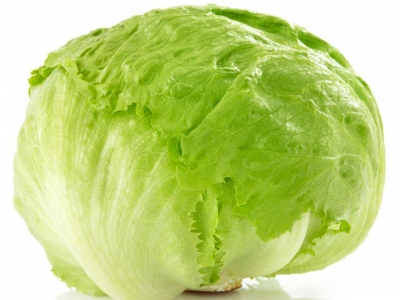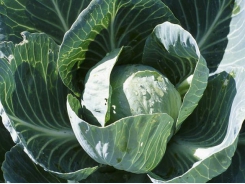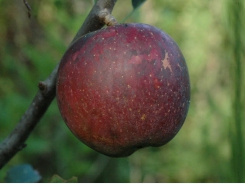Controlling bollworm in lettuce

One pest has caused severe damage on almost every lettuce farm at some time or other: the African bollworm (Helicoverpa armigera).
A cover leaf removed to expose a young bollworm. Photo: Bill Kerr
The bollworm has a life cycle of four to five weeks. To eliminate the threat, it is crucial to act when the worm is most vulnerable. The moths have delta-shaped wings and are mostly reddish- or orange-brown. Like most moths they are nocturnal. They mate and then lay up to 1 600 eggs each, covering fairly large distances in the process.
Caterpillars: The inside story
The larva (caterpillar) emerges from the egg, reaching 30mm in length and presenting with a lateral stripe. Overall colour ranges from brown to green. The larva is darker when young, with more pronounced hairs on its body.
The caterpillars attach to all vegetables and many other crops, as well as weeds, feeding on the plant. In lettuce, the newly-hatched larvae feed on the section of leaf where they hatch. Shortly afterwards, when only a few millimetres long, they bore down under the head-covering leaf and start feeding out of sight and beyond reach of pesticides. This is why the bollworm can be so destructive to lettuce; it often avoids detection and treatment.
The caterpillars continue to feed within the developing head until they reach maturity. They then leave the plant and enter the soil, where they pupate. A few may still feed on the outer leaf, where they are vulnerable to crop chemicals, but most feed inside.
The larvae pupate before winter and remain inactive throughout the colder months. In early summer, the moths hatch from the pupae a few centimetres under the ground, mate and the cycle begins again. Often, a specific set of climatic conditions stimulates the moths to emerge, usually in large numbers.
One of the problems of bollworm is that the long period of inactivity over winter lulls farmers into complacency. They wake up only when the damage has been done and it is too late to prevent heavy losses.
Treatment
Often, an inexperienced farmer sees a hole or two on the outer cover leaf, and proceeds to cut and market the head, unaware that underneath the cover lie chewed leaves, frass and the bollworm itself. The consumer may well be the first to discover this.
There are two ways to eliminate bollworm:
- Spraying: Initiate a spray programme at a frequency that kills the newly hatched caterpillars. Spraying is problematic near harvest time, as an insecticide that remains toxic long enough to eliminate the worm is often hazardous for human consumption. Additionally, frequent spraying is costly.
- Pheromone traps: The other option is to place pheromone traps around the land. These attract male moths, which are then killed by a slow-release fumigant, or by being caught on a sticky surface.
The traps also alert you when moths are active, so that you can spray if needed. Get rid of the larvae before they get under the cover leaves. Newly-hatched larvae are more susceptible to insecticides than when older. The eggs hatch within three to four days, depending on temperature; spraying should thus be timed to coincide with this.
Có thể bạn quan tâm
Phần mềm

Phối trộn thức ăn chăn nuôi

Pha dung dịch thủy canh

Định mức cho tôm ăn

Phối trộn phân bón NPK

Xác định tỷ lệ tôm sống

Chuyển đổi đơn vị phân bón

Xác định công suất sục khí

Chuyển đổi đơn vị tôm

Tính diện tích nhà kính

Tính thể tích ao hồ



 Economical pest control
Economical pest control  What to do after transplanting lettuce
What to do after transplanting lettuce